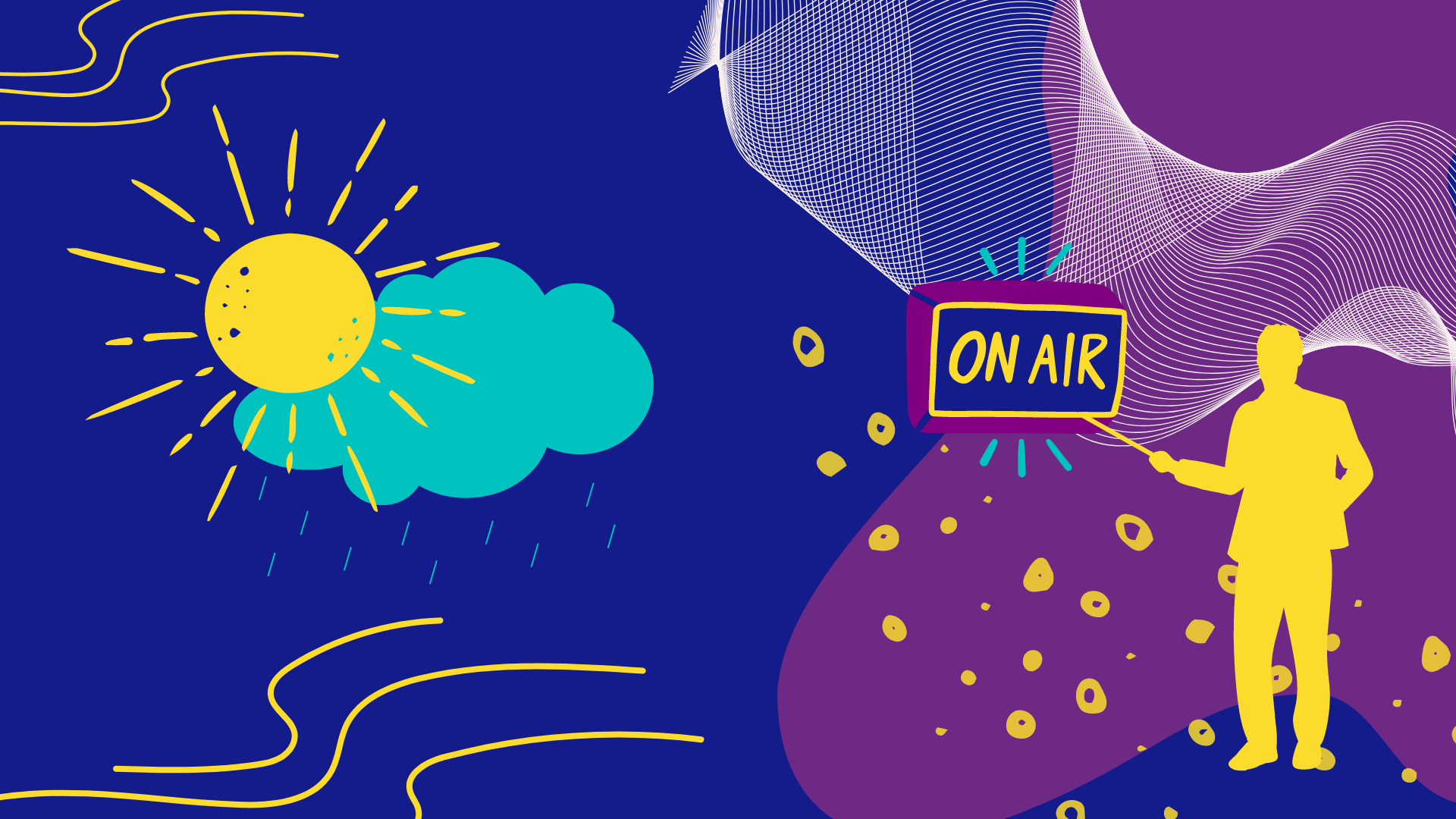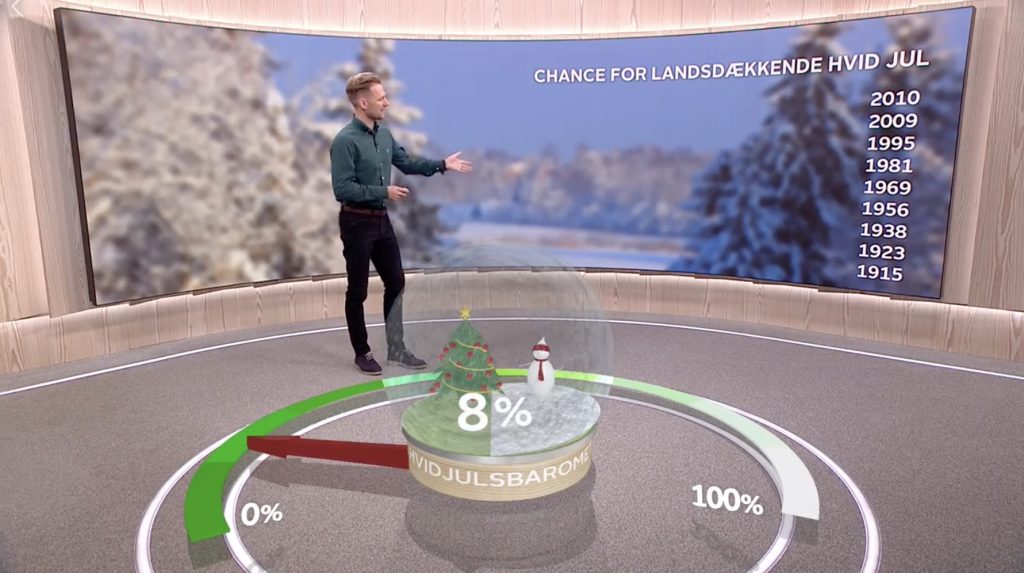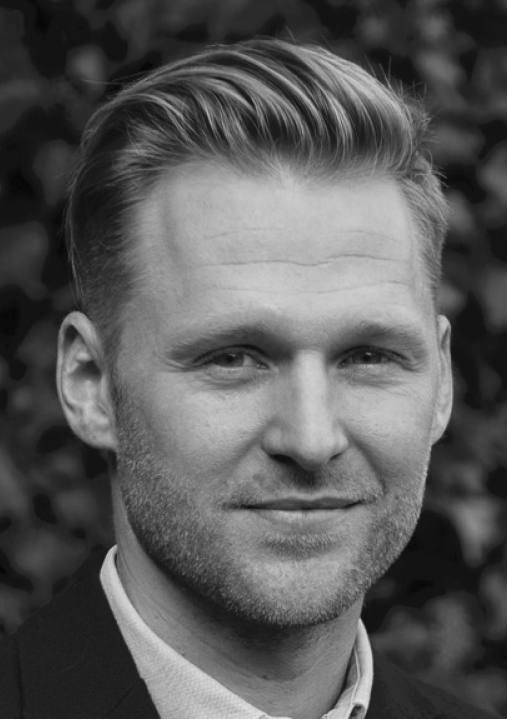
A Cool Career in a Hot Field: Andreas Predicts the Weather and Conveys it with Augmented Reality
interviewee
Andreas Nyholm has a background in geophysics and for almost 10 years he has worked as a weatherman—the kind you see on television every evening. He was headhunted on live TV and today he works in multiple areas of forecasting.
interviewer
Majken Brahe Ellegaard Christensen is an astrophysicist specialized in formation of high-mass stars, the president of astronomical society of denmark and board member of danish women in physics. she is also an active science communicator and outreach consultant through astronomicca.
Almost 10 years ago I was watching primetime TV, when suddenly my old study partner from undergrad, Andreas Nyhom, appeared on my screen. He was presenting the weather forecast for the following day, and I was equally fascinated and surprised to learn that the presenter on this channel was an actual geophysicist.
I hope you share this curiosity with me. In this interview of “Science Communication Space”, Andreas Nyholm from Denmark has invited us in for a sneak peek into his career as TV weather host on TV2 Denmark, which he describes as the most popular TV station in Denmark.
i Always wanted to be a physicist
Since Andreas was a young boy, he knew he wanted to be a physicist. He finished high school in the northern part of Denmark and moved across the country to Copenhagen in 2005. There, he started the physics program at the Niels Bohr Institute (the physics institute of Copenhagen University), and after a few years, he obtained his bachelor’s degree in geophysics. He starts out by describing his educational path:
“Shortly after finishing the bachelor’s program, I was accepted as a meteorologist trainee at the Danish Meteorology Institute, DMI. Here I followed a 9-month course of theory and training to become a meteorologist.
I was specialized in aviation weather and in 2009 I was a certified WMO Meteorologist. After one year of operational work, I was headhunted to TV 2 Denmark—after a short interview on Live TV. The interview was held during the cold winter of 2010, when a severe snowstorm was passing. I was interviewed about how I thought it would develop.”
After having finished his university training and earned his certificate in meteorology, Andreas got a job at one of the biggest television stations in Denmark. I am naturally super-curious to hear what a job like that contains. Andreas explains:
“My job is primarily on-air TV shows – and a lot of them! On both morning and evening shifts it adds up to around 25 TV shows per work shift. Such shows have big variation from forecast to forecast, and they also concentrate on different regions. Even though Denmark is a small country (less than 400 km from North to South), there can be huge differences in weather from North to South and West to East.”

Despite the impressive number of forecasts on each shift, being on TV is not all Andreas does:
“Besides my job you see on TV, I have loads of other “hats” on. I am responsible for the overall graphic look on air, and development of new themes and look. Now we have just launched AR in our studio, which give us new possibilities and ways to explain scientific stuff.
Also, I have helped driving the development of our in-house built weather app, which is awesome and currently the most popular weather app in Denmark. It’s very good in southern Scandinavia and Europe.”
15-minutes deadlines
Over the years he has gotten to know all the corners of weather forecasting. For better and for worse. The high-paced internet and constant competing for user attention affect anyone working in science communication, also Andreas:
“I love being busy and working in a vibrant environment where you have a lot of opportunities and challenges. Often, on the 24-hour news channel, we can be asked to explain something complicated such as climate change and increased atmospheric blocking, or why earthquakes forms in different zones of the world. This involves producing illustration graphics in a rush at well. Sometimes with deadlines of the scale of 15–45 min before you need to be ready.
The thing I might dislike the most, is just opposite. Because of the pace of news today, there is not much time for projects that require weeks of preparation and reflection. I do sometimes miss to research new frontiers. I’m though committed to do some new research in how winter weather has changed in Europe during the last decades. This research is made possible today because of the data at Copernicus.”

I assume there is a lot of scientific work behind the scene, and probably also a lot of preparation. I ask Andreas to explain how a weather forecast comes to be. He describes:
“There is definitely a lot of work going forward before one is ready for the day’s first weather forecast. You basically start by analyzing the weather as it is, by temperature, wind, clouds and rain. Then you check the current state of the atmosphere.
And then you can begin looking at tons of weather model output, to see how they develop. Today, we can figure out a lot by using computer model output, but human experience is still important.”
I wonder if it ever happens that a forecast is changed or discarded at the last minute because of sudden changes in the models, and it turns out that they actually change their forecasts several times a day, when new data rolls in.
Five final questions
Does the audience composition influence how you execute a forecast?
“Yes, there are small differences. In morning shows on the news channel, you need to be sharper and look broader beyond country borders and cover the entire Europe. On the other hand, we also have typical ‘good morning shows’ that are more focused on Denmark and on telling stories with pictures and videos.”
Do you get inspired for dos and don’ts from foreign forecasts?
“Yes, we attend to a conference every year where we meet and greet other TV meteorologist.”
Name a job-position at TV2 Vejret, that people might not expect to work there?
“No surprise there actually, but we do train a lot of meteorology students by having them work for us.”
What will you work on going forward?
“I love to look at weather maps! So, I will continue with my forecast but probably also do more lectures on climate change. Also, I have a big passion in making the public aware of the acute situation we are in.”
And finally: being a weatherman must be awesome! Could you share with us some cool information that we did not know about being a weatherman?
“You get lot of positive feedback when the weather is nice in summertime, it is almost like you are responsible, haha, but of course you receive also some comments when the weather is crap for someone.”